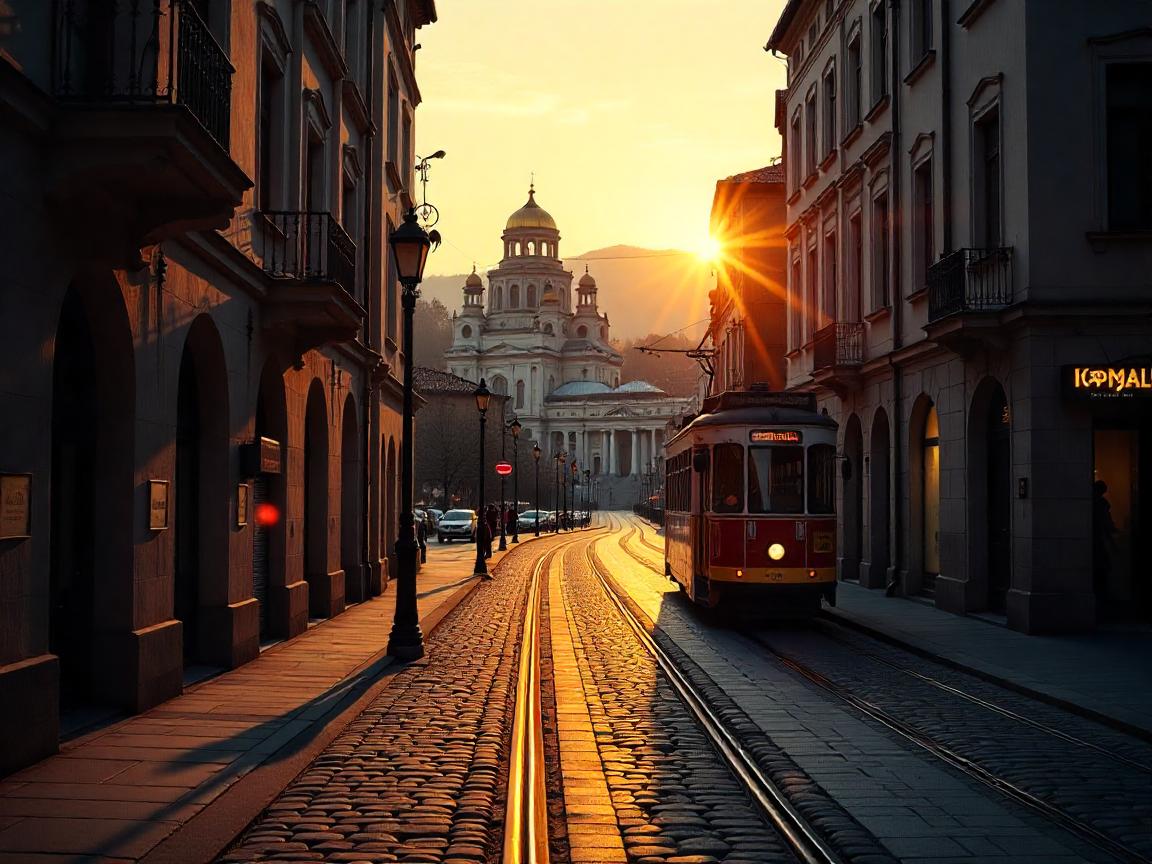<> Viral of Today <>
Home » European Travel News » Whispers of Time: Why Sofia, Bulgaria is Quietly Becoming Europe’s Most Enigmatic and Unmissable Travel Destination in 2025 Monday, June 9, 2025There’s a reason travelers are suddenly whispering about Sofia. This isn’t a loud arrival—it’s a soft awakening. Bulgaria’s capital is no longer waiting in the shadows. Instead, it’s stepping forward, slowly but surely, to become Europe’s most enigmatic treasure. And in 2025, it’s rising as an unmissable force on the global travel map.Sofia, Bulgaria doesn’t dazzle in obvious ways. But its magic lingers. Time feels alive here. It whispers through Roman ruins, Soviet facades, Ottoman mosques, and Orthodox domes. Whispers of time—you feel them under your feet, in the air, in the silence between tram bells.But why now? Why Sofia? As the travel world looks for meaning over luxury, substance over spectacle, this city delivers something rare. Mystery. Depth. Soul.Behind every stone lies a story. Behind every turn, a secret. The question isn’t whether to visit. The real thrill is discovering why Sofia waited this long to be seen.A City That Doesn’t Compete—It CompelsSofia, Bulgaria, doesn’t sparkle like Paris or glow like Rome. It doesn’t bend over backward to be loved. Instead, it waits—timeless, grounded, and quietly powerful. But that’s precisely what makes this Balkan capital a breakout destination for 2025.Tucked into the lap of Vitosha Mountain, Sofia isn’t just a city—it’s a layered time capsule. The streets whisper history, the trams hum memories, and beneath its surface lies a deeper call: one that urges travelers to pause, listen, and look beyond postcards.As European tourism spreads its wings in search of meaningful, affordable, and less-commercialized experiences, Sofia emerges not by campaign—but by character.Tourism’s Hidden Jewel Is No Longer HiddenTravelers are changing. The post-pandemic wave of tourists is more curious, more intentional, and more conscious about where they spend their time and money. They want places that offer stories—not just selfies. Sofia delivers this in volumes.In fact, Bulgaria saw a notable 27% increase in inbound tourism last year, according to data from the National Statistical Institute. A significant portion of that growth was fueled by international travelers seeking alternatives to overvisited Western European cities.Airlines like Wizz Air and Ryanair have expanded direct routes into Sofia, boosting both accessibility and affordability. Meanwhile, Bulgaria’s government is strategically investing in sustainable tourism infrastructure, drawing attention from regional travel bodies across Europe.St. Alexander Nevsky Cathedral: More Than Gold and GloryNo visit to Sofia is complete without witnessing the St. Alexander Nevsky Cathedral. Its iconic golden domes glint against the mountain sky like a sunrise on still water. But this cathedral is more than a symbol of faith—it’s a fortress of national remembrance.Built to honor Russian soldiers from the Russo-Turkish War, the cathedral stands tall not as a monument to conquest, but to collective resilience. It sits in the heart of the city, a golden pulse surrounded by quiet side streets, vintage book markets, and the scent of fresh banitsa wafting from corner bakeries.Boyana Church: A Whisper From the 13th CenturyJust on the city’s edge lies the Boyana Church, where 13th-century frescoes bloom in color and detail so vivid they seem freshly painted. This UNESCO World Heritage Site is small in stature but massive in impact.Every wall inside speaks—a silent sermon from a time when art was the language of devotion. From portraits of saints to humble donors, every brushstroke bridges a gap of centuries with immediacy that even modern murals struggle to capture.Tour operators are beginning to include Boyana on specialized heritage tours, creating a ripple of cultural tourism growth that aligns perfectly with Bulgaria’s national tourism strategy.The National Archaeological Museum: Where Time is Displayed, Not ForgottenHoused inside a former Ottoman mosque, the National Archaeological Museum is where Sofia’s soul spills across glass cases and marble floors.Inside, time unfolds—from Thracian gold treasures to medieval armor. Every artifact seems to glow with memory. And the building itself is part of the exhibit—a preserved relic of faith, now reborn as a gallery of Bulgarian identity.These quiet institutions, once overlooked, are now central to curated experiences by local travel startups that prioritize slow tourism, historical immersion, and community-based storytelling.Sofia’s Strategy: Quiet Tourism for the Curious TravelerUnlike high-volume destinations strained by overtourism, Sofia is crafting a tourism economy rooted in longevity, authenticity, and balance.Government-backed tourism bodies are supporting digital nomads with co-living visas and enhancing visitor infrastructure through grants that focus on preserving heritage and expanding rural reach. New hotel openings near the city center, including boutique luxury options and heritage accommodations, are setting the stage for a mid-to-premium tourism shift.Moreover, Sofia’s expanding tram network, new multilingual wayfinding signs, and investment in eco-tourism along the Vitosha Mountain trails are making exploration both greener and easier.Why Sofia Now? Why It MattersThe global travel industry is at a tipping point. Cities that offer depth over gloss, story over spectacle are beginning to define the next chapter of tourism. Sofia fits this shift perfectly.With its low cost of living, rich cultural narrative, and increasing international visibility, the city is poised to become a key player in Central and Eastern European travel circuits. And it’s doing so without losing its voice—or its silence.The Takeaway: Sofia Is Not Waiting AnymoreFor years, Sofia has quietly stood beneath the radar, beneath the mountain, and beneath the gaze of mainstream tourism. But not anymore.Now, the city’s call is echoing across borders—not through billboards or glossy ads, but through shared stories, returning travelers, and a collective hunger for something real.The stones speak. The trams sing. And time itself bends in prayer under the peaks of Vitosha.In Sofia, the journey doesn’t just begin—it deepens.Tags: Balkan tourism, Boyana Church, bulgaria, cultural tourism, Eastern Europe travel, European travel trends 2025, National Archaeological Museum, slow travel, sofia, St. Alexander Nevsky Cathedral, UNESCO Heritage, Vitosha Mountain
This information will surprise you!
See also
- Read until the end to discover everything.
- Important information you need to know.
- Interesting facts and helpful tips.
Conclusion
Did you enjoy the news? Keep following us daily!

